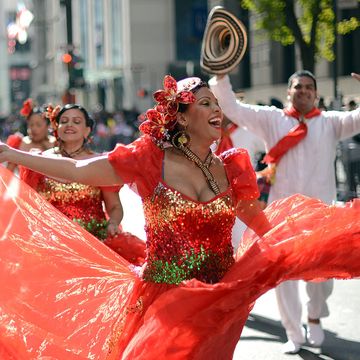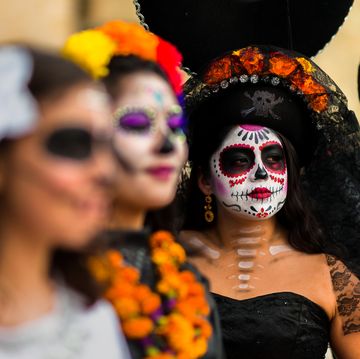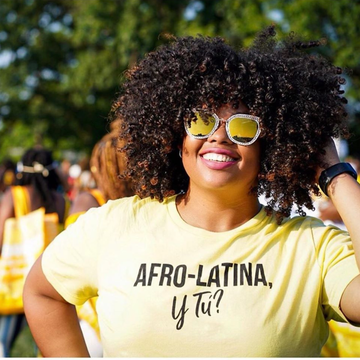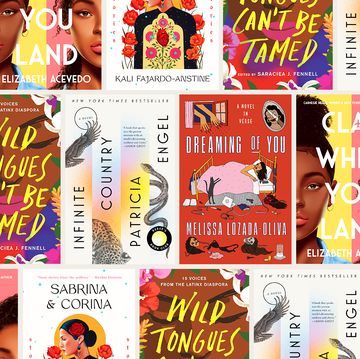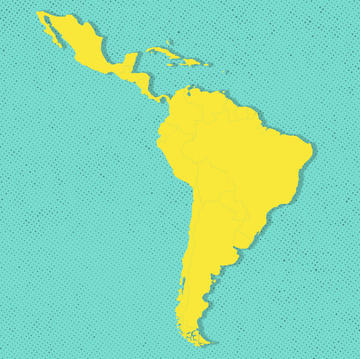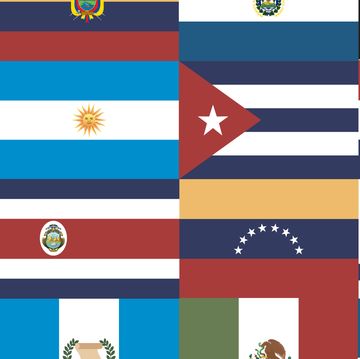Hispanic Heritage Month 2022 begins on Thursday, September 15, and ends on Saturday, October 15. While you never have to wait for an annual event to take pride in your ethnic background, for Hispanic Americans, the purpose of those four weeks is to honor their respective cultures and the histories behind them. And by “Hispanic Americans,” we mean those who self-identify as Hispanic. (The terms Hispanic and Latino are not quite interchangeable, though many people identify as both.) It’s a period meant for recognition, education, and celebration, similar to Black History Month in February, Asian American Pacific Islander Heritage Month in May, or LGBTQ Pride Month in June.
You may choose to celebrate Hispanic Heritage Month with any number of activities, including enjoying food native to countries and territories such as Argentina, Costa Rica, and Puerto Rico. If you’re a movie buff, you can seek out films that weave a culturally rich story like In the Heights, based on Lin-Manuel Miranda’s Tony-winning musical. You can also check out these hilarious Hispanic comedians for some much-needed laughter.
Expect to see famous Hispanic people, such as Jennifer Lopez, Shakira, Maluma, Marc Anthony, Eva Longoria, and Supreme Court Justice Sonia Sotomayor paying tribute to those who came before them, too. But what is Hispanic Heritage Month, and why is it celebrated? Here are some facts to know about how it came to be, and why it’s split across two months.
What does Hispanic Heritage Month mean?
The celebration was created to recognize the positive impact that Hispanic Americans have left on the country. "Each year, Americans observe National Hispanic Heritage Month from September 15 to October 15, by celebrating the histories, cultures and contributions of American citizens whose ancestors came from Spain, Mexico, the Caribbean and Central and South America," according to the official government website.
According to the Census Bureau, the U.S. Hispanic population is 62.1 million as of 2020, "making people of Hispanic origin the nation’s largest ethnic or racial minority." What's more, between 2010 and 2020, a little over half of the U.S. population growth stemmed from the increase in the Hispanic or Latino population. It's worth nothing that these estimates are largely based on the Census question that asks people to self-identify whether or not they are "of Hispanic, Latino, or Spanish origin."
Who started Hispanic Heritage Month?
President Lyndon B. Johnson first introduced National Hispanic Heritage Week in 1968.
In Presidential Proclamation 3869, available via the Library of Congress, President Johnson wrote, “Wishing to pay special tribute to the Hispanic tradition, and having in mind the fact that our five Central American neighbors celebrate their Independence Day on the fifteenth of September and the Republic of Mexico on the sixteenth, the Congress by House Joint Resolution 1299, has requested the President to issue annually a proclamation designating the week including September 15 and 16 as National Hispanic Heritage Week.”
On August 17, 1988, Congress passed a law to extend it into a monthlong holiday during Ronald Reagan's presidency. The first Hispanic Heritage Month was celebrated in 1989.
The following government institutions honor Hispanic Heritage Month: The Library of Congress, National Gallery of Art, Smithsonian Institution, United States Holocaust Memorial Museum, National Archives and Records Administration, National Endowment for the Humanities, and the National Park Service.
Why is Hispanic Heritage Month split over two months, starting on September 15?
As cited in President Johnson's 1968 Proclamation, September 15 is the date when five Latin American countries—Costa Rica, El Salvador, Guatemala, Honduras, and Nicaragua—earned their independence from Spain in 1821. Mexico, Chile, and Belize became independent on September 16, 18, and 21 from Spain and the United Kingdom, respectively.
Thus, the mid-September date held firm when it was extended from a week to a month.
What countries are involved in Hispanic Heritage Month?
According to the U.S. Census Bureau, the month honors “the culture and traditions of those who trace their roots to Spain, Mexico and the Spanish-speaking nations of Central America, South America, and the Caribbean.” Those countries include Argentina, Bolivia, Chile, Colombia, Costa Rica, Cuba, Dominican Republic, Ecuador, El Salvador, Equatorial Guinea, Guatemala, Honduras, Nicaragua, Panama, Paraguay, Peru, Puerto Rico, Uruguay, and Venezuela.
While Hispanic and Latino are used interchangeably by many, Hispanic is a term used to describe someone of Spanish-speaking origin, while Latino, Latina, and Latinx are used to describe a person of Latin American origin. The month, according to the official description, recognizes those whose roots are from a country that speaks Spanish as the primary language. For example, a person from the Latin American country of Brazil may consider themselves Latino but not Hispanic, since Brazilians speak Portuguese and not Spanish.
How do people celebrate Hispanic Heritage Month?
The official government website typically keeps a calendar of highlighted activities hosted throughout the U.S., from concerts to art festivals and parades. A majority of the festivities held throughout the U.S. are family-friendly and occur at the local level—and many are free.
The theme for 2022, as announced by the National Council of Hispanic Employment Program Managers (NCHEPM), is "Unidos: Inclusivity for a Stronger Nation." Last year's theme was "Esperanza: A Celebration of Hispanic Heritage and Hope."
More in-person celebrations are expected to be held this year, but if you're staying close to home, you can always relax with a good book by a Spanish-language author that takes you into someone else's experience. Make it a point to support Latina-owned businesses. You can even brush up on your own Spanish by listening to these great Spanish-language podcasts and watching these Spanish-language TV shows (La Casa de Papel/Money Heist and Elite will have you hooked!).

As the Senior Editor of OprahMag.com, I'm a jack-of-all-trades, overseeing our entertainment coverage (we cover TV shows like The Politician and Big Brother, movies such as J.Lo's Hustlers and Lena Waithe's Queen and Slim), features, news items, and— as her number one fan—all of Lady Gaga's whereabouts. I proudly edit Coming Out, a series where LGBTQ+ change-makers reflect on self-acceptance. And I edit our Weird or Wellness series, which I highly recommend you read on the weekend. Prior to O, I began my career in the fashion department at Marie Claire, and eventually moved on to InStyle, where I dabbled in social media and covered events such as the Grammys, Toronto International Film Festival, and New York Fashion Week. A native of Miami, I received my journalism degree from the University of Miami. One time, Rosario Dawson complimented my hair and asked to touch it. I let her.

Samantha Vincenty is the former senior staff writer at Oprah Daily.



